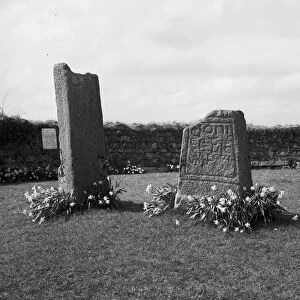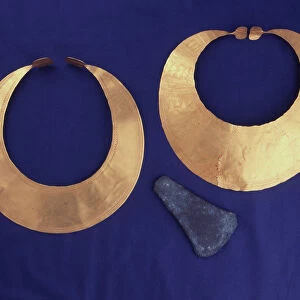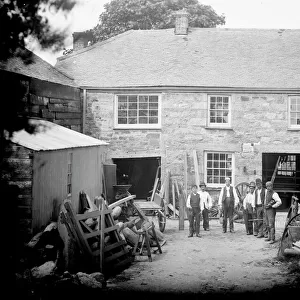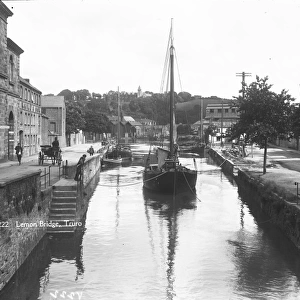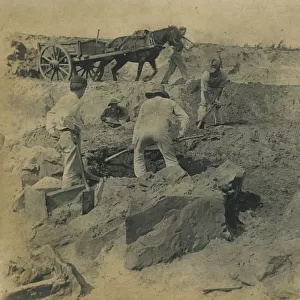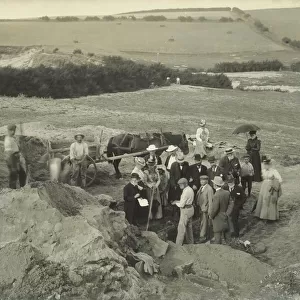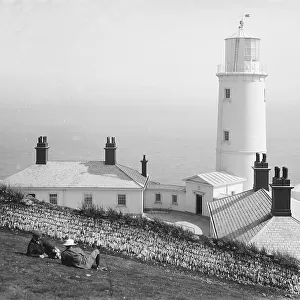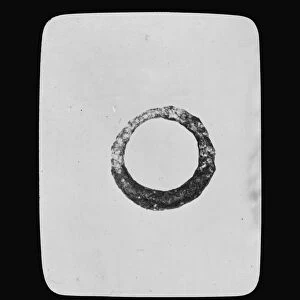Home > Europe > United Kingdom > England > Cornwall > St Merryn
Stone mortar excavated at Iron Age cemetery, Harlyn Bay, St Merryn, Cornwall. 1968
![]()

Wall Art and Photo Gifts from Royal Cornwall Museum
Stone mortar excavated at Iron Age cemetery, Harlyn Bay, St Merryn, Cornwall. 1968
A view of a stone mortar formerly at the museum at Harlyn Bay. The Iron Age cemetery in Harlyn Bay was excavated between 1900 and 1906. When digging foundations for a new house to be built, Mr Reddie Mallett had made an important archaeological discovery by finding a cist containing human remains. Excavations over the next 6 years found Harlyn Bay to be the largest Iron Age burial site in Cornwall. Bronze Age barrows had been discovered in 1864, on the west side of the bay, near the cliff edge, by a labourer digging a pond on land owned by Mr Hellyar. The museum was closed in the 1970s and most of the artefacts transferred to the Royal Cornwall Museum. Photographer: Charles Woolf
Royal Cornwall Museum is the UK's Greatest Museum For Cornish Life & Culture
TRURI : AMERm.2
Media ID 19584193
© RIC, photographer Charles Woolf
Archaeology Greenham History Joyce Artefacts
FEATURES IN THESE COLLECTIONS
> Europe
> United Kingdom
> England
> Cornwall
> St Merryn
> Royal Cornwall Museum
> Archaeology
> St Merryn
> Royal Cornwall Museum
> Places
> St Merryn
EDITORS COMMENTS
This print showcases a stone mortar that was excavated at the Iron Age cemetery in Harlyn Bay, Cornwall. Dating back to 1968, this artifact offers a glimpse into the rich history of the region. The excavation of Harlyn Bay's cemetery took place between 1900 and 1906 when Mr Reddie Mallett stumbled upon a cist containing human remains while digging foundations for a new house. Over the following six years, extensive excavations revealed Harlyn Bay as the largest Iron Age burial site in Cornwall. This discovery added to previous findings of Bronze Age barrows in 1864 near the cliff edge on land owned by Mr Hellyar. The stone mortar featured in this photograph is one of many archaeological treasures uncovered during these digs. It served as an essential tool for food preparation and grinding grain, providing valuable insight into ancient culinary practices. Preserved within its worn surface are echoes of long-lost meals shared by our ancestors. Originally housed at the museum in Harlyn Bay, most artifacts from these excavations were later transferred to the Royal Cornwall Museum after its closure in the 1970s. Photographer Charles Woolf expertly captured this image, immortalizing not only an archaeological find but also preserving Cornish heritage for future generations. Through such historical finds and ongoing archaeology efforts like those conducted at Harlyn Bay, we continue to unravel fascinating stories from our past and gain a deeper understanding of our cultural roots.
MADE IN AUSTRALIA
Safe Shipping with 30 Day Money Back Guarantee
FREE PERSONALISATION*
We are proud to offer a range of customisation features including Personalised Captions, Color Filters and Picture Zoom Tools
FREE COLORIZATION SERVICE
You can choose advanced AI Colorization for this picture at no extra charge!
SECURE PAYMENTS
We happily accept a wide range of payment options so you can pay for the things you need in the way that is most convenient for you
* Options may vary by product and licensing agreement. Zoomed Pictures can be adjusted in the Cart.


